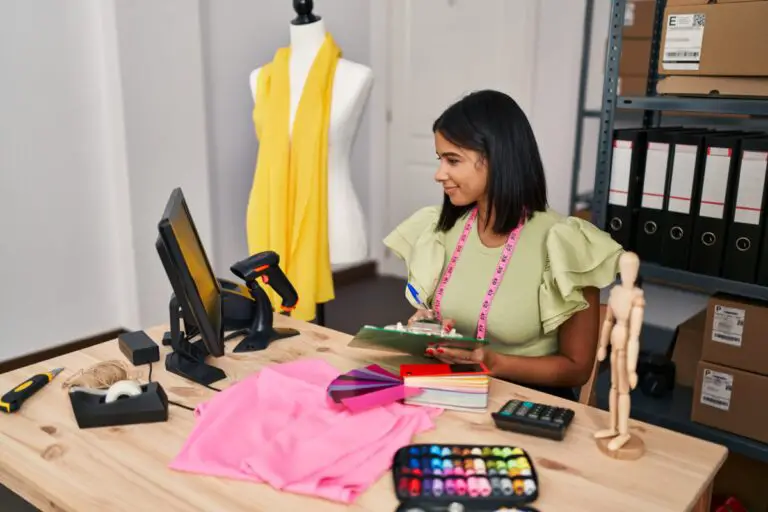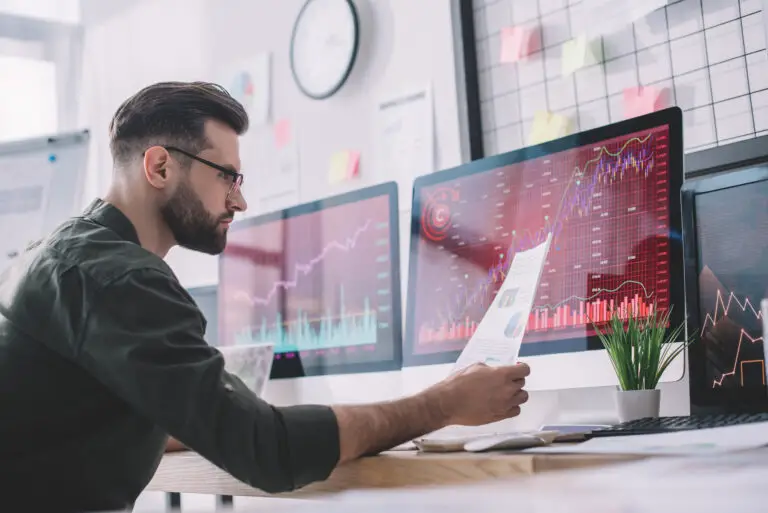22 Types of Marketing Emails That Actually Work (2024)
The main purpose of a marketing email is to provide value – you can ask the reader for an action after you’ve already engaged, informed, or entertained her.
Here are the main types of marketing emails, which all have a specific, measurable purpose.
Types of Marketing Emails
1. Customer Story Emails
Customer success stories provide your store with excellent social proof, and it’s a great type of email marketing campaign for giving your customers inspiration on how to use your products.
These best marketing emails are best suited to people who are new to your product and service or haven’t ordered from you for a while. Sending a relatable customer success story reminds them of the benefits of using your product.
How to Do It
- Find a customer success story in which your product solves a problem that potential customers might also have.
- Mention alternatives that the customer used and why they didn’t work to show that your product is the best one.
- Encourage other customers to share their success stories to increase your social proof.
2. Upsell and Cross Sell Emails
This email campaign type shows customers products they might be interested in while increasing sales for your store.
It involves alerting customers to products that are similar to products they’ve already bought or been looking at, so it’s best to send one of these emails after a purchase or browsing session. You can also show readers more expensive versions of a product they’ve been browsing.
How to Do It
- If you’re upselling a product or subscription the customer has already tried, remind them of their progress to encourage them to upgrade.
- Personalize emails based on the customer’s preferences and previous orders.
- Make upgrading or purchasing a different product as easy as possible by offering a feature like the one-click upgrade.
3. Customer Birthday Discount Emails
Customer birthday discount emails give your customer a special price reduction on their birthday while increasing their brand loyalty to you and increasing your chances of getting a sale.
Send out this marketing email shortly before the customer’s birthday, offering an exclusive discount just for them. Send a follow-up email a few days later reminding them to use the discount before it runs out.
How to Do It
- If you have existing data on the customer and what they’ve bought before, include similar products in the email as suggestions for what they could buy.
- Make a unique discount code that only works for that particular account so they feel exclusive and individually valued.
- Give the discount an expiry date to create a sense of urgency.
4. Cart Abandonment Emails
Cart abandonment emails increase your conversion rate and help customers who may have accidentally left something behind in the cart. This email campaign idea should be sent when somebody adds an item to their cart and leaves without buying it.
If you want to increase the chance of the customer returning to the cart and going ahead with checkout, add an exclusive discount code.
How to Do It
- Add a sense of urgency by telling the customer that the product will soon be out of stock.
- Cross-sell other similar products in case the customer no longer wants the product they left but something similar instead.
- Use an intriguing subject line that increases the chance that the customer will open the email.
5. Review Request Emails
The more reviews you have on your website, Trust Pilot, or social media page, the more likely potential customers are to trust that your products or services are high-quality.
This type of email – a review request email – shows customers that you value their opinions, and if you offer a reward for leaving a review, they’ll be more likely to shop with you.
How to Do It
- Offer a discount code or entrance into a competition as a reward for loyal customers who leave you a review.
- Send review request emails soon after a customer has purchased a product so it’s fresh in their mind.
- Prioritize sending these emails to regular customers who will be more likely to give you positive reviews.
6. Broadcast Emails
A broadcast email is great for sending announcements to customers and is a great way for your to promote updates or new products.
These emails should be used sparingly, as customers can easily get bored of receiving this type of marketing email if the content isn’t specific to them. Send broadcast emails whenever there’s news or a sale that would be of interest to customers.
How to Do It
- Emphasize the benefits that your announcements will have for customers.
- Make sure you send broadcast emails only to the customers in your subscribers that it is relevant to in order to avoid people unsubscribing because they’re not interested in the email.
- Remember to include a call to action in every broadcast email so you’re inviting the customer to engage.
7. New Product Teaser and Pre Orders
This email marketing technique is great for informing customers of new products before they hit the (digital) shelves. It also increases your chance of getting pre-orders for a product.
Send out this type of campaign a few days or so before the pre-order drops. To build up suspense or excitement, send a few emails before the product goes live with a countdown.
How to Do It
- Offer an exclusive discount to the first 100 people who buy the product to create a sense of scarcity.
- Make sure to target this email at customers who have previously bought similar products to the one you’re teasing.
- Use video content to show what the product will look like in real life.
8. Educational Emails
Sending an educational email benefits customers because it informs them and it also establishes you as a market expert. The more informed you are about your sector, the more customers will trust your product.
Send out an informational email every now and then when you haven’t got a new product to release but want to make sure you’re keeping your customers engaged.
How to Do It
- Send out this email type when you haven’t sent an email out for a while as a way to keep customers interested.
- Add a call to action at the end of the email to prompt customers to check out your products.
- Make sure to use research and references so customers know they can trust your information.
9. Brand Story Emails
Brand story emails give customers a better idea of who you are and increase your chance of getting sales by creating brand loyalty. Brand story emails are best sent to new customers who have just joined your mailing list.
Brand story emails are also one of the types of busines email to send out when you change or update something about your brand.
How to Do It
- Emphasize how your brand was created to solve a problem or fill a gap in the market.
- Inform customers about your sustainable and ethical policies so they feel comfortable buying from your brand.
- Talk not just about your brand, but also about your customers and how your brand has benefited their lives.
10. Sales Follow-Up Emails
Sales follow-up emails can be used to check in with a customer after a sale. This kind of email provides aftercare to the customer and also allows you to upsell more products and show the customer you care.
Send a sales follow-up email after a customer has purchased an item, tell them you hope they’re happy with their product, and encourage them to leave a review.
How to Do It
- Make sure to give customers an easy way to get in touch with you if they have problems or want to give feedback.
- Cross-sell products related to the products they bought in order to increase the order value per customer.
- To increase customer loyalty, consider offering a discount or deal on the customer’s next purchase.
11. Triggered Behavior Emails
Triggered behavior emails happen when the customer or potential customer carries out a specified action, such as subscribing to a mailing list, browsing a product, buying a product, or abandoning their cart.
You can specify the actions you want to trigger this marketing email, but try not to use too many triggers to avoid customers getting overwhelmed. These behavior emails typically try to encourage the customer to carry out a particular action.
How to Do It
- Set up these trigger emails for key points in the purchase process, either to encourage the customer to follow through on their action or to upsell other products.
- Make sure the email contains a call to action at the end, so you’re getting follow-up activity from the customer.
- Use data from these emails to inform your future trigger point strategy.
12. Content Roundup Emails
Content roundup emails help customers keep up to date with your content and establish your eCommerce store’s presence as an industry leader.
By giving customers a round-up of new pieces of content, you’ll receive more engagement on the content, which will, in turn, attract other customers and increase your sales.
Content roundup emails can also remind customers who haven’t bought anything for a while about your store.
How to Do It
- Make sure the content you’re sharing is relevant to the subscribers you send the email to.
- Add helpful information in your content to show customers you’re interested in being engaging and informative.
- Send content roundup emails in quiet periods when you haven’t sent out an email for a while. It helps remind customers you’re still there.
13. Time-Sensitive Promotional Emails
Time-sensitive promotional emails contain information about a limited-time offer, deal, or sale. These email marketing types create a sense of urgency around your products, which can increase sales.
The benefit for the customer is access to an exclusive deal or discount that means they can get something cheaper than usual. The benefit to your store is the possibility of more sales.
How to Do It
- Email your customers a couple of days before the time-sensitive event, so they don’t miss the event by being late checking the email.
- Combine the promotional email with a social media campaign for maximum impact.
- Offer an exclusive time-sensitive promotion just for email subscribers to make them feel uniquely valued.
14. New Content Emails
Putting out content can make your brand appear more like an industry leader by providing customers with useful, engaging information. You can encourage customers to look at this content by sending out new content emails whenever you release content, such as a blog, case study, or press release.
This dedicated email allows customers to keep up with brand news and improves the reach of your content.
How to Do It
- First practical protip (try to give intermediate/more advanced tips)
- Second practical protip (try to give unique or not so well known advice, not common sense advice)
- Third practical protip
15. Partnership Promotions
Having successful business partnerships can give your store access to a whole new target audience. Keep customers informed of new partnerships and let them know the benefits by sending out partnership promotions emails.
By sending a promotional email, you’ll attract customers to come and look at your new branding or products. Send this type of email when you partner with a brand for a long-term relationship or new product release.
How to Do It
- Include the other brand or influencer’s story in your email to let customers know they match your ethos.
- Use this type of email to emphasize how the partnership will provide a benefit to customers.
- Be clear that the only changes the partnership will make will be positive to reassure long-term repeat customers.
16. Product Update Emails
This is one of the most important types of email marketing because it lets customers know if there are any changes to their favorite existing product or new similar products launching.
Product update emails are important for your business because they increase the chance of your customers buying new products or updated products. Send them out whenever you’re updating an existing product or launching a new one.
How to Do It
- Make sure to email customers who have previously bought the product to inform them of any updates.
- Be clear on how the product update will provide benefits to your customers’ lives.
- Include a clear call to action directing the customer towards how to buy the new product and include the launch date.
17. Connect via Social Emails
Social media can be an excellent way to connect with customers and increase sales, so create an email campaign strategy directing customers to follow you on social media.
To make the social media connection attractive for your customers, promise that they’ll have access to exclusive deals and company news. This way, your customers will benefit from following you on social media channels.
How to Do It
- Once your customers have followed you, encourage them to post pictures of your products that you could use as social proof.
- Promise a reward for following social media, such as unlocking a 10% discount to encourage customers to follow you.
- Use screenshots of existing social media campaigns you’ve created to show customers the type of content they’ll get to see.
18. Event-Specific Emails
This type of email marketing campaign works best when you have an online event to announce, such as a sale, Black Friday event, or even a digital event, such as an interview that complements your brand.
This email marketing strategy lets customers know about upcoming events that might interest or benefit them while allowing you to attract more attendees to your events.
How to Do It
- Let the customer know how the event will benefit them, either through cheaper products or more knowledge.
- Give the customers an option to give feedback on the event. That way, you’ll have more data to help you craft future sales and events.
- Send a few follow-up emails after the initial event email to remind customers.
19. Re-Engagement Emails
Re-engagement emails are an email marketing idea to re-attract previous customers who haven’t purchased from you in a while.
This great email campaign helps you to increase conversions from customers who have disengaged and reminds customers of products they might be interested in.
Send re-engagement emails to inactive customers who have previously purchased from you but not during the last six months.
How to Do It
- Include products that you think the customer will like based on their previous purchases to attract them back to your store.
- Offer an exclusive discount to encourage the customer to return for another purchase.
- Use subject lines such as ‘we miss you’ with an emotional pull to connect with the customer.
20. Email Newsletter
An email newsletter is a way of regularly connecting with your customers.
This email campaign should be used to update your customers on company news, show case studies and customer success stories, and promote new product launches.
This marketing by email keeps customers in the loop while increasing the chances of them buying your products. It also gives your brand a more personal image.
How to Do It
- First practical protip (try to give intermediate/more advanced tips)
- Second practical protip (try to give unique or not so well known advice, not common sense advice)
- Third practical protip
21. Welcome Emails
This type of email marketing should be sent to new customers when they subscribe to your email list or buy their first product.
This type of email lets customers know what to expect from your brand and should include details about your brand story and its ethos.
Welcome emails give your brand a more personal touch and are the first step in creating a lasting relationship with customers.
How to Do It
- Include recommended products in your welcome brand email based on the customer’s first purchase or preferences.
- Tell new customers how they can continue to connect with you via social media and other mediums.
- For more customer data, ask customers to fill in a form or complete a profile with more information.
22. Thank You Emails
This is one of the most common of the different types of emails, and it lets customers know you’re grateful for their business and creates a personal connection.
Creating this personal connection makes customers more likely to purchase something from your store again. You can also use this email to direct customers to other similar products based on what they’ve already bought.
How to Do It
- Offer the opportunity for customers to give feedback about the purchase process so they know their opinion matters to you.
- Use the email content to create the idea that the customer is now part of an exclusive club.
- Offer a discount such as free shipping or 10% off on their next order.





